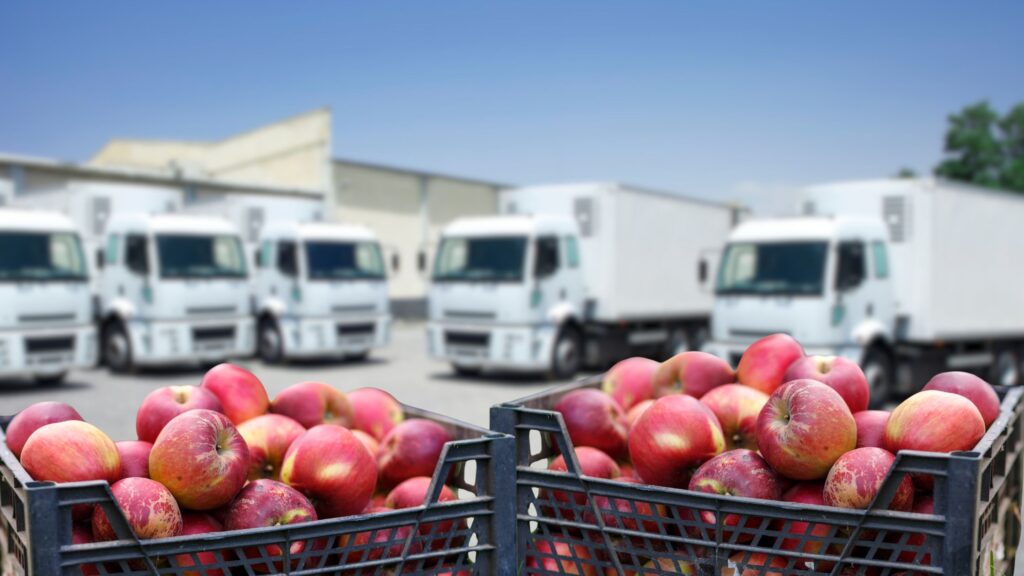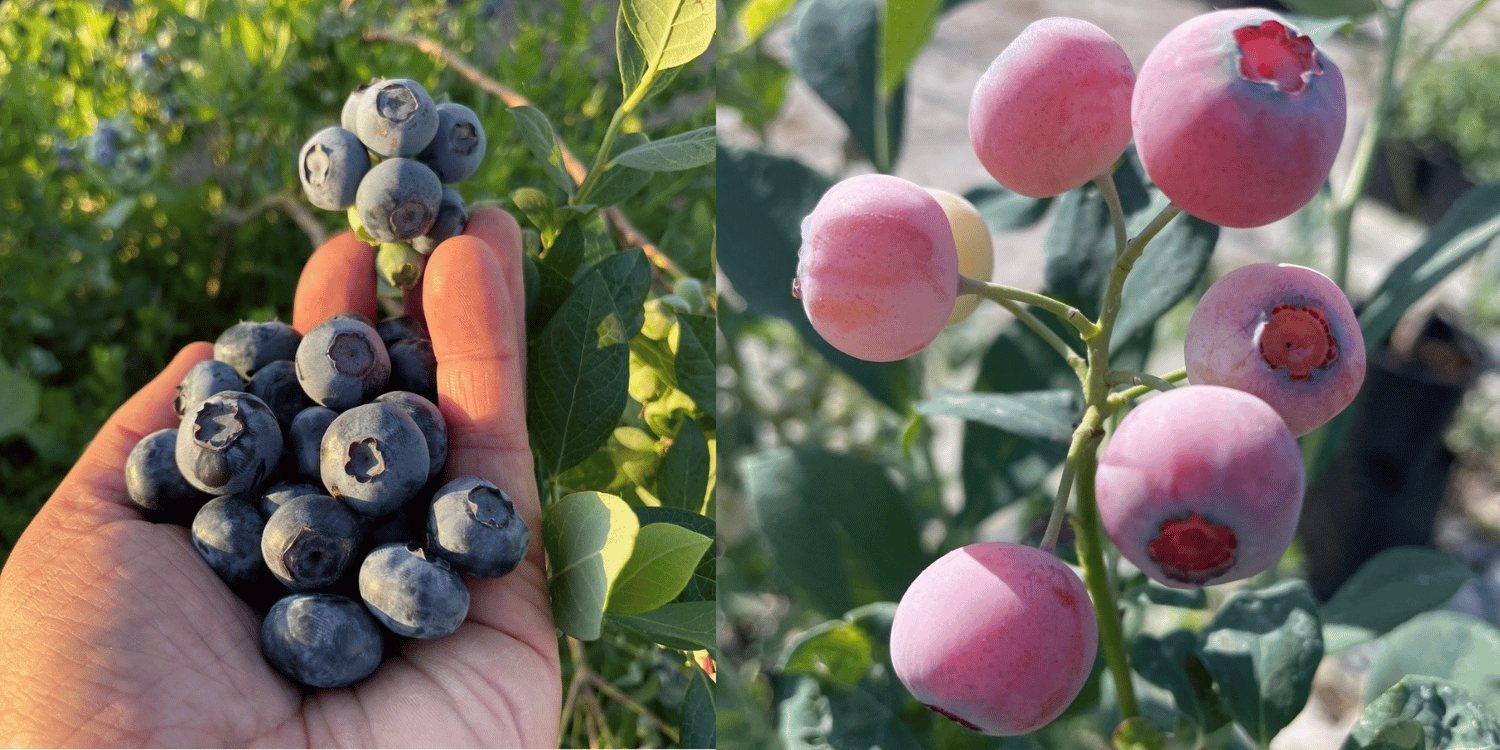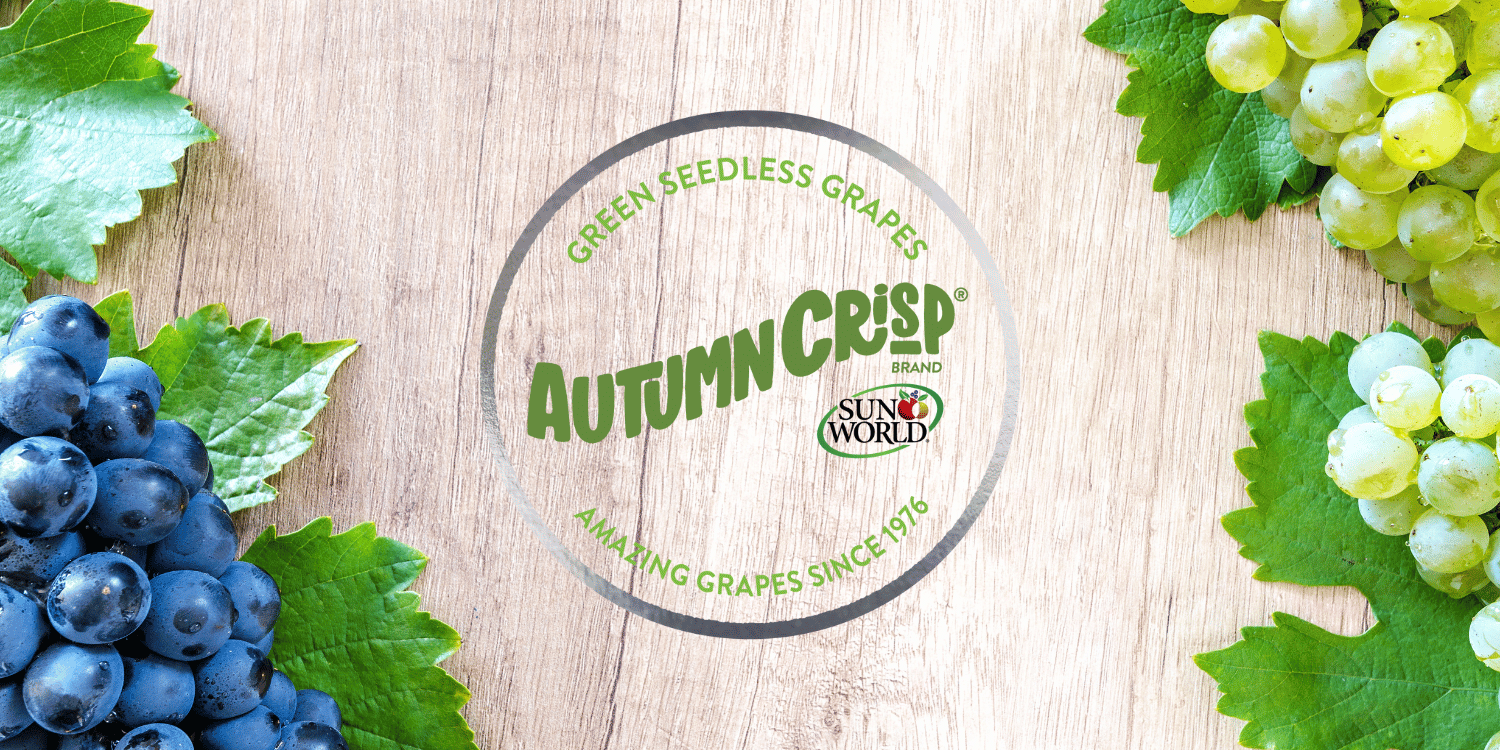Investing in cold chains is essential for maintaining the freshness and quality of produce.
Cold chain logistics involves the use of temperature-controlled transportation and storage units to preserve perishable items such as fruits and vegetables.
These technologies help in reducing the chances of spoilage and waste, thus ensuring customer satisfaction.
Moreover, efficient cold chains increase the shelf life of perishable goods, opening up the potential for long-distance trade and export.
The investment, though significant, comes with considerable returns such as reduced overall costs, improved quality control, and consumer trust.
Therefore, for businesses that deal with perishable produce, investing in cold chains should be considered a strategic imperative.
- Cold chains are key to maintaining produce freshness during transport.
- Cold chain logistics are fundamental for food preservation and customer satisfaction.
- Investing in cold chains can significantly enhance the shelf life of produce.
- These investments often deliver profitable returns through improved cost efficiency.
- Cold chains build consumer trust by assuring the safe delivery of fresh produce.
While we’ve cracked the basics of how investing in cold chains contributes to produce freshness, we’ll also be moving forward to explore related themes.
The following sections will be highlighting the technological advancements and trends in the industry, offering an insightful perspective.
Additionally, we aim to address the role of regulatory norms and ways businesses can leverage these systems for improved supply chain functionality.
Stay tuned as there’s a wealth of practical information coming your way related to this game-changing facet of the produce industry.
Contents
What Are Cold Chains?
In Short: A cold chain is a sequence of refrigerated production, storage, and distribution activities that maintain a desired low-temperature to keep food products fresh and prevent spoilage. Besides being instrumental in the food industry, cold chains are also crucial in transporting and storing pharmaceutical products, especially vaccines.
Picture this scenario. You are at your favorite neighborhood grocery store, perusing the fresh produce aisle.
You reach out for an apple and marvel at its glossy skin. It is wonderfully cool to the touch, crisp, seemingly fresh off a tree somewhere. But have you ever stopped to wonder how that apple remains so fresh and cool, despite being hundreds, possibly thousands, of miles away from its orchard home?
Enter cold chains.
A cold chain is essentially a temperature-controlled supply chain. It is an unbroken series of refrigerated production, storage and distribution activities, along with associated equipment and logistics, which maintain a desired low-temperature range.
Cold chains are pivotal to the modern food industry. Why, you ask?
- Maintaining freshness: Cold chains ensure that your apple remains as fresh as the day it was plucked, even after being transported across continents.
- Preventing spoilage: They prevent the premature rotting of food produce and increase its shelf-life.
Let me tell you, the presence of effective cold chains is what allows you to enjoy your favorite fruits and vegetables, irrespective of the season or where you live.
It is interesting to note that cold chains are not just about fruits and vegetables. Did you know that cold chains also play an equally essential role in the transport and storage of pharmaceutical products, particularly vaccines? Isn’t it fascinating how far-reaching the impacts of cold chains are?
Crucially, a break in the cold chain, whether due to faulty equipment or inefficient handling, often results in the degradation of the produce.
Can you imagine the significant economic losses a grocery store would suffer if their perishable produce were to spoil prematurely? Moreover, think about the impact on consumer trust and the possible health risks.
Pro Tip: A cold chain is a temperature-controlled supply chain, composed of an unbroken series of refrigerated production, storage, and distribution activities, with associated equipment and logistics that maintain a desired low-temperature range; they are instrumental in preserving the freshness of food and preventing spoilage during transport, and are also critical for the transport and storage of pharmaceutical products, particularly vaccines.
This is why it is important to invest in high-quality, technologically advanced cold chains. After all, isn’t it absolutely worth it to ensure that the apple in your hand remains just as the farmer intended – fresh, crisp and oh-so-delicious?
In a nutshell then, cold chains really are the invisible heroes of the modern food and pharmaceutical industry. Next time you enjoy a fresh apple, take a moment to think about the marvel of cold chains. It really is quite something, isn’t it?
Importance of Cold Chains
In Short: Cold chains play a vital role in maintaining the freshness, quality, and longevity of refrigerated produce, also reducing waste and potential economic loss. Investment in cold chain technology not only contributes to sustainability and food safety, but also expands market opportunities for the agricultural sector.
Cold chains are essential to maintain an uninterrupted series of refrigerated products, including fresh and frozen produce. This technology ensures product freshness and quality from harvest to consumption.
Efficient cold chains drastically reduce food wastage, which can happen due to exposure to unfavorable temperatures. Adequately managing these risks is a task of utmost importance.
Ever wonder why your fruits and vegetables seem to last longer than others? It’s all due to cold chain technology.
Without an effective cold chain system, a large portion of the produce can end up in landfill. This amounts to a significant economic loss for farmers and affects retail prices.
Plus, it’s a waste of resources that go into food production – water, land, energy. Does anyone benefit from food waste? Certainly not.
Let’s look at some of the key reasons why investing in cold chains is a sound decision.
- Quality preservation: Cold chains ensure that the natural freshness, texture, and color of the produce are preserved.
- Safety control: Lower temperatures inhibit the growth of harmful bacteria, enhancing the safety of food products for consumers.
- Extension of shelf life: Cold chains increase the shelf life of produce, minimizing food waste and thereby increasing profits.
- Market expansion: With extended freshness, produce can travel long distances and reach new markets without going bad.
Talk about going the extra mile for customers, right? Such proactive steps help enterprises build trust with their consumers.
They are not just business-wise. They also contribute significantly to global efforts at reducing food waste and promoting sustainability.
Thanks to cold chains, consumers can access fresh produce year-round, irrespective of seasonal cycles. Fruits that are off-season in one part of the world can still decide to make an appearance at a supermarket thousands of miles away.
Could you imagine a world without your favorite fruits or vegetables because they’re out of season? Thanks to cold chains, you don’t have to.
Looking at the economic perspective, a robust cold chain infrastructure can open new avenues for the agricultural sector. It enables farmers to access bigger, distant markets, meaning more revenue and a stable livelihood.
Now you see why cold chains are a game-changer in the produce industry. It goes beyond keeping your fruits and veggies fresh.
Pro Tip: Cold chains are essential in maintaining an uninterrupted series of refrigerated products and this technology ensures product freshness and quality from harvest to consumption.
Behind that crisp apple or fresh salad in your plate, there’s an elaborate process aiming to provide the best quality, offering a safe, healthy choice for you.
Isn’t that a reason worth investing time, resources, and technology?
Basics of Cold Chain Logistics
In Short: Cold chain logistics is an intricate process integral to several industries, especially in the agricultural sector for retaining the freshness and nutritional value of produce. This system involves maintaining a consistent chilly environment across stages including harvest, transportation, storage, packaging, and distribution with attention also paid to monitoring, thermal protection packaging, and regulatory compliance.
All right, let’s dig in into the core idea of cold chain logistics. Now, would it surprise you if I told you that temperature control is the backbone of this system?
Yes, the entire operation revolves around maintaining an uninterrupted chilly environment. Why exactly would that be necessary, you might ask?
Well, it’s crucial in a lot of industries. From food and pharmaceuticals to floral arrangements and artworks.
But today, let’s focus on one industry specifically. Can you guess which one? That’s right, the agricultural sector.
By now, you’re probably envisioning refrigerated trucks, cold storage facilities, and the like. But there’s more to it than just that.
Have you ever wondered how organic fruits and vegetables retain their freshness by the time they get to your local supermarkets? Allow me to enlighten you.
When it comes to the produce industry, the cold chain logistics process includes several critical steps. Here’s the abbreviated version of it:
- Harvesting and immediately chilling the fresh produce
- Swift transport to a cold storage facility
- Keeping them chilled until they are ready for packaging
- Continuous chilling during sorting and packaging
- Maintaining the chill during distribution and retail
It’s an intricate process, isn’t it? Imagine the amount of behind-the-scenes work it requires.
There’s also monitoring and managing the cold chain. These include maintaining the right temperature, regulating humidity levels, and timely delivery. Would you believe it truly is as complex as it sounds?
Moreover, we can’t overlook the importance of packaging material. It plays a significant role in thermal protection, don’t you agree?
Undeniably, employing cold chain logistics boosts the chances of retaining our greens’ nutritional value. It keeps disease-causing bacteria at bay and reduces food wastage too.
We can even track the efficiency of the cold chain process. We use metrics like temperature excursions and distribution time windows, among others.
One might wonder about the cost implications of such a complex process. Sure, it’s not cheap. But isn’t it a small price to pay for ensuring freshness and conserving the produce’s nutritional value?
Pro Tip: Remember, maintaining an uninterrupted chilly environment is key in cold chain logistics, helping to retain the freshness and nutritional value of produce from the time of harvest to retail.
It’s also becoming increasingly regulated. Standards like the Food Safety Modernization Act in the United States lay strict guidelines for cold chains. They cover everything from packaging to labeling and traceability requirements. Moving forward, non-compliance is not an option, is it?
The bottom line is, cold chain logistics is a complex, yet important part of our everyday lives. It brings so much value, from maintaining the quality of produce, to reducing wastage, and even upholding public health. It’s truly astounding, don’t you think?
Role in Produce Preservation
In Short: Cold chains play a critical role in produce preservation by maintaining the optimal temperature throughout the supply chain, extending shelf life and ensuring freshness, reduced waste, and nutritional quality. Effective cold chain management, though challenging especially in regions with limited infrastructure, is key to global food safety, worth investment and fundamental to the fresh produce supply chain.
When it comes to produce preservation, investing in cold chains is invaluable. Why, you might ask?
Well, it offers a solid method to maintain the freshness of perishable goods, particularly produce. It ensures that the produce maintains its quality from the time it’s harvested until it reaches the consumer.
The freshness of the produce is directly related to its temperature. If the produce is subjected to high temperatures, the produce will quickly lose its flavour and nutritional value.
Yet, in comes a cold chain. The cold chain ensures optimum temperature throughout the entire supply chain. This means that storage and transportation conditions are closely monitored and adjusted to maintain a uniform low temperature. But how does this technology play such a crucial role?
Cold chains utilize a series of refrigerated storage systems and transportation methods. These keep produce at their optimal freshness and nutritional quality. Essentially, cold chains provide temperature-controlled environments at every stage of the supply chain.
The impact of this innovative technology cannot be overstated. It contributes to food safety, nutritional integrity, and the taste quality of the produce.
Next is a succinct list showing specifically the reasons why investing in cold chains is sizeable for produce preservation:
- The best possible environment is provided for the produce to maintain freshness.
- It prolongs the shelf life of the produce, ensuring reduced waste and monetary loss.
- It creates a positive effect on the produce’s supply chain, facilitating farm-to-table supply.
- Maintains the nutritional quality and flavor of the produce.
Astoundingly, the cold chain method also contributes to reducing waste, quite significantly. Too often, produce that’s harvested doesn’t reach the consumer in a consumable state leading to massive waste. By maintaining optimal temperature, cold chains significantly decrease this waste.
However, ensuring a cold chain is effective and efficient requires diligent monitoring and technological innovation. Both these aspects are crucial in achieving high-quality fresh produce delivered to consumers.
It’s worth noting how the concept of cold chains is now fundamental to the global supply chain of fresh produce. Imagine a world without this revolutionary technology, and think about how it has reshaped the way we handle, store, and distribute perishable goods.
However, challenges still exist in implementing cold chains effectively, especially in regions with limited infrastructure or technological access. The focus needs to be on overcoming these challenges, as the potential positives of cold chain technology are far too significant to ignore. Isn’t the promise of better food safety, less waste, and improved quality of fresh produce worth the investment?
On the whole, the role that cold chains play in preserve freshness is essential. From maintaining taste and nutritional value to reducing waste and ensuring a steady supply, cold chains have changed the face of the produce industry. Isn’t it time to invest more in this important infrastructure?
Cold Chains and Customer Satisfaction
In Short: Cold chains ensure freshness and quality in perishable foods, enhancing customer satisfaction and prolonging shelf life. Investing in cold chains is essential for food safety, waste reduction, and boosting consumer confidence in the food supply system.
There is a unique bond that quickly forms between produce freshness and the satisfaction levels of customers. With this in mind, what role does a cold chain play in this scenario?
A cold chain can be seen as the unseen hero. Its task is to ensure that the foods we enjoy, especially perishable items, are brought to us in the best possible state.
This includes fruits, vegetables, dairy products, meats, and even seafood. Can you imagine the shock of biting into an apple, only to discover that it’s gone bad?
Or opening a container of yogurt, only to find it’s turned sour? The quality of these products is directly linked to how well they’ve been preserved in transit.
The preservation of produce is important. It keeps food from spoiling and ensures that it retains its freshness, taste, and nutritional value.
By maintaining an unbroken cold chain, food losses due to spoilage can be minimized. How much easier would grocery shopping be if you didn’t have to worry about the freshness of your food?
Directly related with these benefits, we must highlight the key advantages of investing in cold chains. They are quite simple but impactful and they reinforce the food supply system. Let’s explore them:
- Extended Shelf Life: Cold chains contribute to prolonging the lifespan of perishable goods. With a longer shelf life, customers can enjoy their favorite fruits and vegetables no matter the season.
- Nutrition Preservation: Vitamins and minerals in produce are maintained, thanks to cold chains. This way, consumers are able to reap the full benefits of consuming fresh produce.
- Food Safety: By inhibiting the growth of harmful bacteria, cold chains make sure our food is not only fresh, but also safe to eat. Is there anything more important than consuming safe food?
- Consumer Trust: Consumers feel more confident purchasing items that are fresh and of high quality. This trust raises their level of satisfaction and encourages repeat purchases.
Certainly, the value of fresh produce in the market cannot be understated. Regardless if the customer is a dedicated vegan, a meat lover or just a healthy eater, fresh produce is a common denominator.
And it’s a well-known fact that customer satisfaction is key to running a successful business in the retail grocery sector. Isn’t it logical to invest in something that directly impacts customer satisfaction?
Not forgetting, the growing consciousness about food wastage globally, it’s clear that investing in cold chains is more than just a choice. It’s an essential strategy to conserve food, reduce waste, and safeguard our environment.
Important: A cold chain plays a vital role in preserving the freshness, taste, and nutritional value of food items, directly impacting customer satisfaction and contributing to food safety, extended shelf life, nutrition preservation, consumer trust, and environmental conservation.
Alright, perhaps it might not be an easy task for every business to institute an effective cold chain. But, as a matter of fact, the benefits clearly outweigh the challenges, don’t they?
At the end of the day, maintaining a cold chain might not seem that exciting on the surface. But in truth, it is an integral part of our daily lives that goes noticed only when there’s a breakdown. Now how’s that perspective to consider?
Impact on Shelf Life of Produce
In Short: Cold chains extend the shelf life of fresh produce by slowing down the metabolic process, thus reducing respiration, transpiration, and microbial activity in fruits and vegetables. However, careful handling is necessary as each type of produce has unique storage requirements and excessive coldness can damage some.
When we talk about cold chains, what image forms in your mind? Most likely, it’s a continuum of refrigerated spaces meant for storing perishables. But have you ever stopped to ask how it impacts the shelf life of produce?
Cold chains help in arresting the natural decomposition process in fresh produce. Curious about the science behind it? Well, let’s dig in.
Cold storage slows down the metabolic process in fruits and vegetables.
But what does this mean exactly? Quite simply, the slowing of respiration and transpiration, the key processes by which produce ages and ultimately spoils.
Fruits and vegetables, just like us, breathe. Yes, you heard it right!
Though they are harvested, they are full of life. And with life, comes respiration. But unlike us, produce respire through their skin, so to speak.
Here’s a crucial piece of information you might find interesting:
- The higher the respiration rate, the faster the decomposition and thus, shorter the shelf life.
Want to guess what happens when stored in cold chains? The temperature reduces, followingly decreasing the respiration rate. Consequently, the shelf life extends.
But that’s not all, the chilling temperature also aids in reducing microbial activity. Wondering how that’s beneficial? It’s simple.
The lower the microbial activity, the lesser the chances of the produce spoiling prematurely due to microbial attacks. Think this impact ends at shelf life? Couldn’t be further from the truth.
The freshness and quality of the produce are also significantly preserved in cold chains. But how, you ask?
By maintaining the color, texture, and flavor characteristics of the produce. Yes, all these essentials can be preserved!
However, bear this important point in mind;
- Exposure to excessive coldness can damage some produce. Struggle to believe it?
Think about it. Do all fruits and vegetables normally grow in cold climates? No. Hence, not all of them can also tolerate extremely low temperatures.
This brings us to another interesting point. The need for careful handling in cold chains. But why is it so necessary?
Because each fruit or vegetable has its own unique storage requirements. Shocked, aren’t you?
Thus, the temperature and humidity have to be carefully calibrated for optimal storage conditions. Is it all making sense now?
All this information begs the question, does investing in cold chains for produce freshness pay off in the long run?
The answer remarkably is, yes! From the arresting decay, preserving quality, to elongating the shelf life of produce. You can’t help but marvel at the impact of cold chains, can you?
Investments and Returns
In Short: Cold chain logistics is considered a profitable investment sector due to the high demand, reduction in food waste and potential for significant long-term returns, despite the initial high costs. Increased market growth, cost savings from reduced spoilage, and growing focus on food regulations are key factors that enhance the value and competitive edge of investments in this sector.
Regarded as a good investment, cold chain logistics bring profit for investors. But, what’s the possible return on investment in this field?
Firstly, it’s important to understand, the cost of setting up a cold storage system is arguably high. The critical elements include everything from purchasing cooling units, transportation vehicles, to installing technology systems for tracking and monitoring.
All these require significant capital investment. However, one must consider, does the return justify the initial investment?
Several market studies suggest that the cold chain market is expected to observe a substantial growth in future. High growth potential coupled with increasing demand can translate to healthy profits in the long run. Creation of an efficient cold chain infrastructure will reap high returns, won’t it?
The purpose of this sector, is enhancing produce freshness and shelf life, which directly impacts food waste reduction. Companies will thus experience less spoilage, saving them a significant amount of money over time.
There are some key points to consider for those investing in cold chain infrastructure. Let’s dive into a few of them.
- Market growth potential: Rapid urbanization and changing consumer preferences are leading to increased demand for fresh produce.
- Cost savings: Effective cold chains reduce spoilage and waste, leading to significant cost savings in the long run.
- Regulations: There is an increasing focus on food safety regulations, which may drive the need for more comprehensive cold chains.
Setting up a competitive and reliable cold chain can create a strong competitive edge. It’s no secret that today’s consumers are willing to pay a premium for fresh, quality produce, isn’t that true?
Additionally, investor confidence in this sector is constantly growing. This reassures future investors about the return potential. Increased growth rates and government initiatives further boost this optimistic market trend.
One can’t ignore the rising importance of technology for fit-for-purpose cold chain systems. Investing in the latest tech will streamline your operations and reduce losses from malfunctioning units or mishandled shipments, hence giving a good return on investment, don’t you agree?
Leveraging the potential of cold chain logistics aims to provide higher quality produce. While cost may be a barrier at first, the profitability, in this case, can be high with a well-established system. The future seems promising, doesn’t it?
Every investment carries a risk. However, weighing up the costs and benefits, it seems the return on investment for cold chain infrastructure is promising for businesses and investors alike. When well planned and executed, the advantages of this investment come to the forefront. And it’s hardly a surprise that this sector is increasingly becoming a welcomed addition to many investor’s portfolios.
Cold Chains and Cost Efficiency
In Short: Cold chains are temperature-controlled supply chains essential for preserving agricultural produce, reducing wastage, extending shelf life, and increasing profitability. Despite operational, installation, and maintenance costs, by customizing and managing cold chains intelligently, significant return on investment can be achieved through long-term sustainability and efficiency.
It’s interesting to notice how the agriculture sector relentlessly seeks newer ways to preserve freshness. But what is a Cold Chain?
A cold chain is a temperature-controlled supply chain – an uninterrupted series of storage and distribution activities that maintain a given temperature range.
Now, these chains are important to preserving the freshness of fruits and vegetables. Have you ever considered how much waste is produced due to spoilage?
Two significant advantages are gained from cold chain investments: reduced wastage and extended shelf life.
This is where cost efficiency comes into play. A closer look shows us that investing in cold chains reduces losses and therefore increases profitability. Does that make sense?
The following are a few considerations to bear in mind when exploring cold chains:
- Firstly, energy costs are a pivotal factor in driving the operational costs.
- Second, installation and maintenance of equipment constitute another significant expense.
- Last, variations in produce life cycles could also affect cold chain designs and efficacy.
To achieve maximum diversion of energy costs, cooling requirements must be synchronized with the type of produce. Wouldn’t it be functionally and financially prudent to create customized cold chain solutions for specific kinds of produce?
Now, another factor to consider is the infrastructure support. The installation, maintenance, and servicing of refrigeration units can be an expensive affair, isn’t it? Let me tell you, well-computed cold chain practices can drastically reduce these overheads.
There’s a myriad of other context-specific factors to be taken into consideration too. Factors such as seasonal variations can drastically affect the produce lifecycle. This can, in turn, influence the effectiveness of your cold chain strategy.
Investing in well‑thought‑out cold chains is thus highly advantageous. The reduction in waste and the increase in lifespan have evident benefits but the cost efficiency of cold chains is equally important.
By analyzing the cold chain factors meticulously, one can find ways to optimize not just for freshness but also for cost. That’s a win-win situation, don’t you think?
Pro Tip: Investing in well-thought-out cold chains can lead to reduced waste, extended shelf life, and higher profitability – but remember, this requires not just cooling, but also intelligent energy management, routine maintenance, and customization based on the specific produce being stored.
Keep in mind, storage today requires more than mere cooling. It demands intelligent energy management, routine maintenance and a variety of customizations based on the specific produce being stored.
Undoubtedly, the return on investment (ROI) from the right cold chain practices will be reflected in long term sustainability, waste reduction, and increased efficiency.
Building Consumer Trust with Cold Chains
In Short: Cold chains build customer trust by guaranteeing the safety and freshness of produce through transparency, quality control, and accountability. This system acts as a bridge between consumer trust and food supply companies, fostering reliance on brands that handle items responsibly.
We live in an era where transparency plays a pivotal role in customer decisions.
Let me tell you, how can we build consumer trust?
The answer lies within the mechanism of the cold chain.
It’s a system whose efficacy has proven to create a sense of trust.
Now, what is the cold chain you might ask?
The cold chain is a system that guarantees the safety and freshness of produce from farm to fork.
It’s a testament to the supplier’s commitment to quality and safety.
It’s this unwavering commitment that breeds trust.
But how exactly does the cold chain technology foster trust?
Well, we can dig in into that by highlighting three key aspects.
Here’s a short list to help you understand better:
- Transparency – The cold chain provides data on temperature and handling processes.
- Quality – Fresh produce is a result of persistent temperature control.
- Accountability – Should any mishap occur in the supply chain, the fault could be easily traced back to its source.
Can you imagine the level of trust such operations would create?
It’s undeniably significant.
Through this transparency, consumers are assured their purchases are handled responsibly.
An assurance which followingly builds trust in a brand.
After all, who wouldn’t want to know where their food comes from?
And how it gets to their table?
Knowing that a supplier has a reliable cold chain gives customers that peace of mind.
The second point here is quality.
Quality in terms of produce freshness.
With cold chain management, freshness is a guarantee not a chance.
The idea that the food you consume is fresh, builds a level of trust that is unshakeable.
Does that not sound appealing to you as a customer?
The final aspect we’ll discuss is accountability.
In a perfect world, nothing would ever go wrong.
However, we’re not in a perfect world.
Incidents may occur in the supply chain causing a breach in temperature control.
But with a well-managed cold chain, such incidents can be quickly identified and rectified.
This swift reaction builds faith in a system that is accountable.
Let me tell you, in your journey as consumers, wouldn’t you rather choose a brand which can be relied upon?
One that’s transparent, provides quality and is accountable for their actions?
This is the kind of trust that cold chains can build among consumers.
Important: The cold chain is a system that guarantees the safety and freshness of produce from farm to fork, fostering consumer trust through transparency, quality, and accountability.
Clearly, the cold chain is not just a technology.
It’s a bridge that connects the gap between consumer trust and food supply companies.
The Bottom Line
Cold chain logistics have emerged as an essential tool in maintaining and investing in the freshness of produce, greatly contributing to customer satisfaction and cost efficiency.
Its importance cannot be underestimated as it forms the backbone of food preservation, impacting both the shelf-life and freshness of the product.
These systems not only deliver returns on investments but also aid in building consumer trust due to their ability to maintain the quality of the produce throughout its lifecycle.
The bottom line being – strategic investments in cold chains will result in fresher produce, enhanced consumer trust, and increased efficiency, altogether representing a win-win situation for both businesses and consumers in the long run.




















